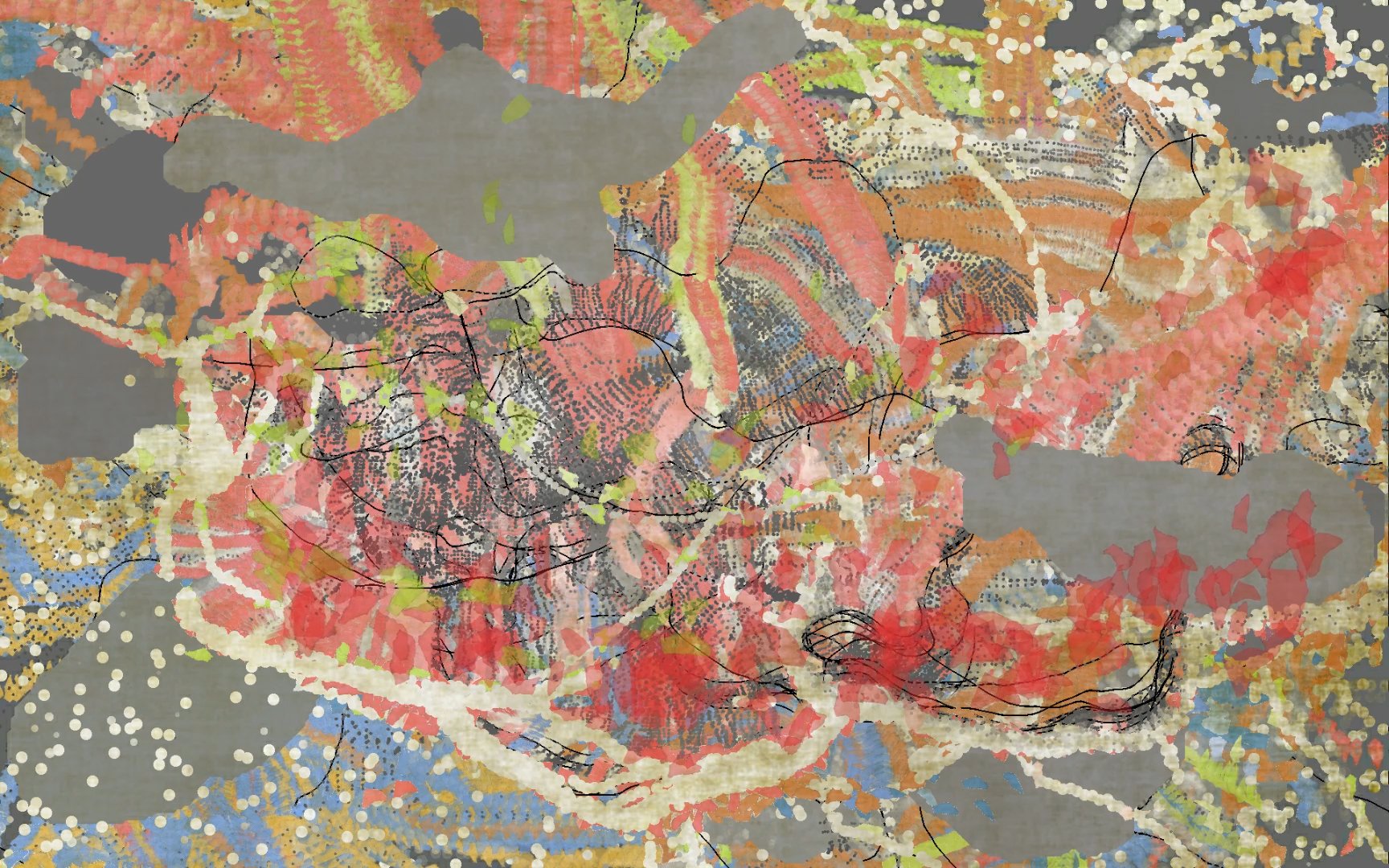Precarious was created for the National Portrait Gallery exhibition Black Out: Silhouettes Then and Now, which opened in May, 2018.
More information about the National Portrait Gallery Black Out exhibition can be found on the exhibition webpage and in the scholarly catalog published by the Princeton University Press.
Precarious is an interactive installation that extends the historical practice of tracing human silhouettes with a mechanical apparatus on a backlit screen, by instead “tracing” gallery visitors with contemporary digital tools. Utterback uses a ceiling mounted depth camera to record peoples’ silhouettes as seen from above. Her software then continually interprets and redraws this data, rendering the silhouettes not with the stark fixedness of paper cut outs, but as tremulous outlines of bodies moving through time. The painterly aesthetic of Precarious builds on the algorithmically generated visual language which Utterback has refined over many years via her custom coded interactive drawing systems.
In the Precarious system, silhouettes are never fixed. As Utterback’s software draws peoples’ outlines, each line is translated into a series of points. The points are programmed to exert an animating force on the other points, which generates ongoing momentum in the continually redrawn forms. Each person’s silhouette is also visually altered by the movements of other people in the shared exhibition space. Past outlines are unintentionally erased as new participants enter the space and overwrite the previous projected imagery. Outlines are also intentionally refigured – as participants discover they can push and manipulate others’ existing outline marks with their own body. Pieces from one person’s silhouette move and accumulate onto another person’s outline, becoming shared evidence of both people’s presence in this space.
In contrast to the historic tradition of silhouettes as sharply delineated singular forms, Precarious creates a space where intermingled personal boundaries are publicly negotiated and visualized as constantly changing images. As the artwork’s title suggests, Utterback reimagines the silhouette as a more transient and interdependent portrait where a fixed self, or a self visually “cut off” from those around us is impossible.
Project Team:
Raphael Palefsky-Smith developed the KinectV2 camera tracking, particle physics infrastructure, and database and configurations recall for Precarious in coordination with Camille. Raphael worked intensely with Camille throughout the process, and she thanks him for his many valuable insights, questions, and ideas which contributed significantly to the work’s evolution.











